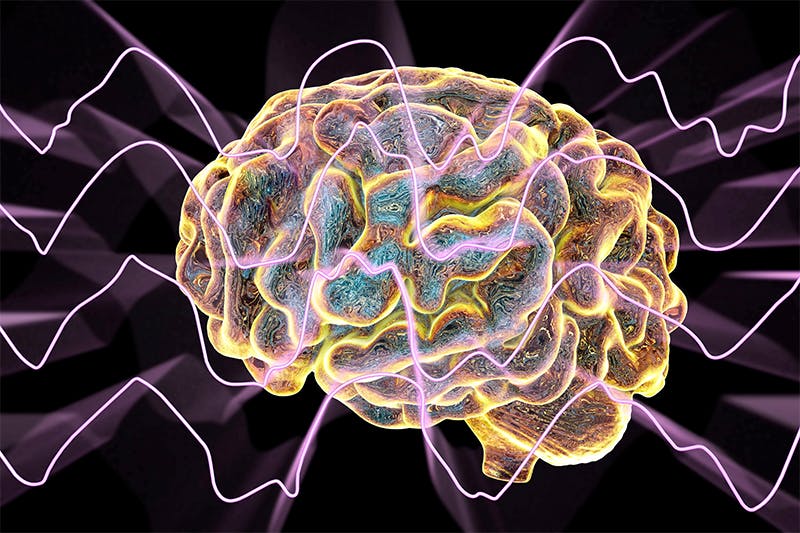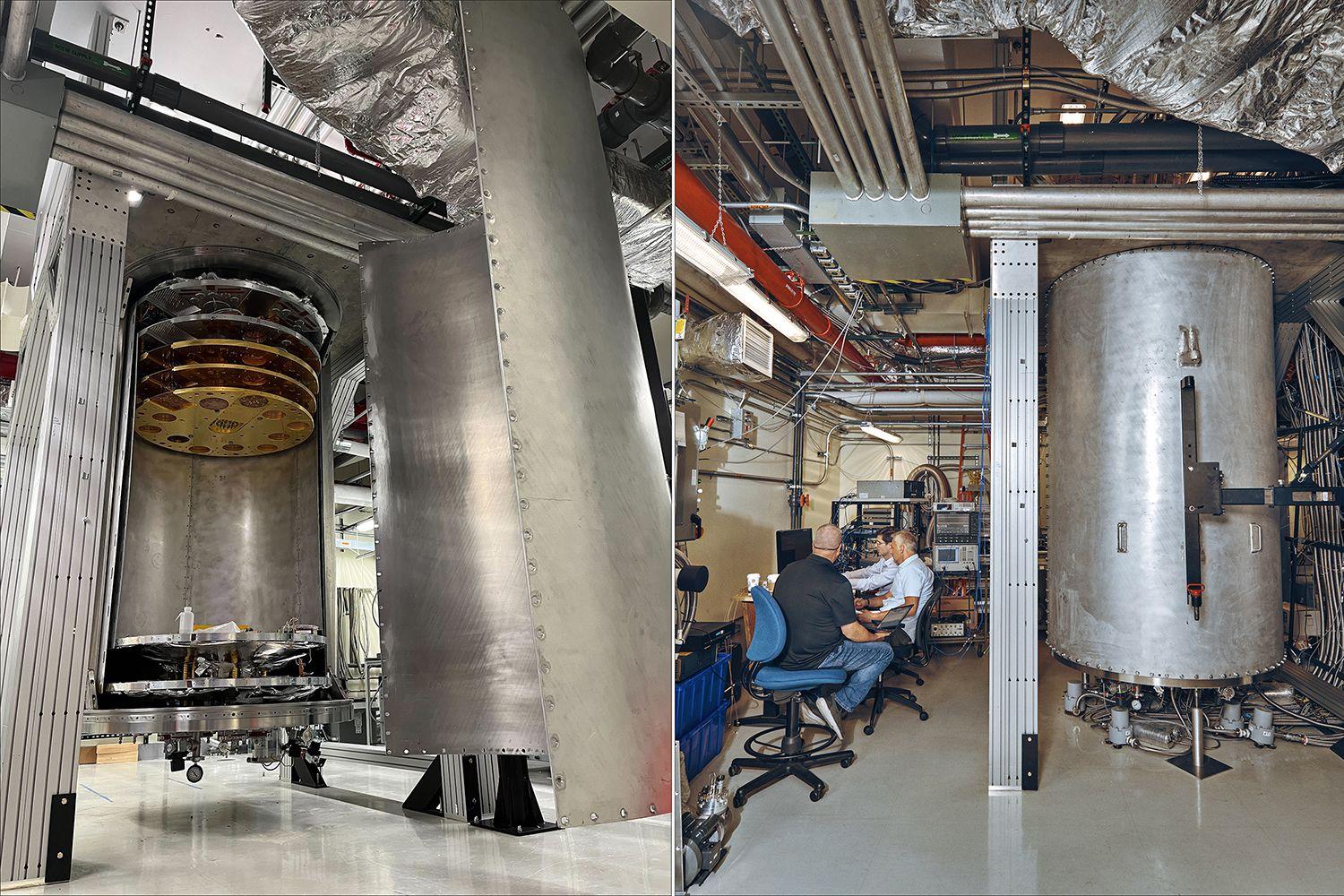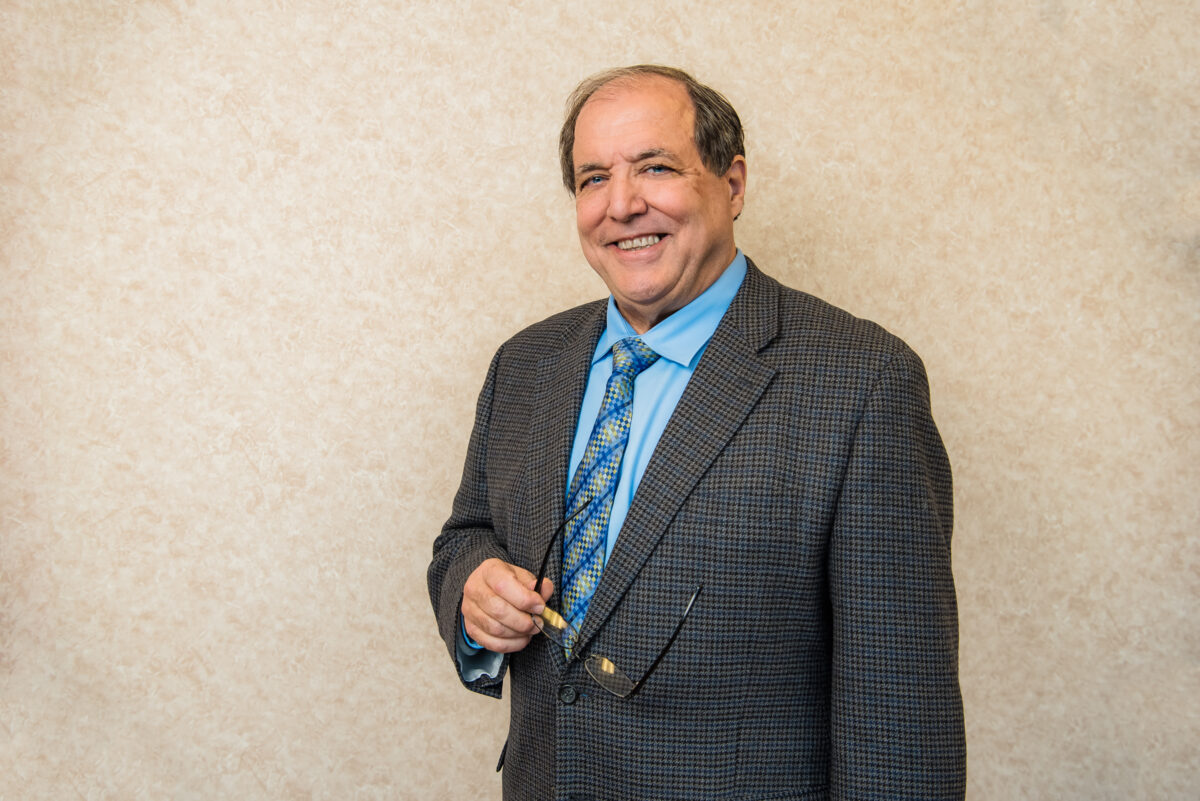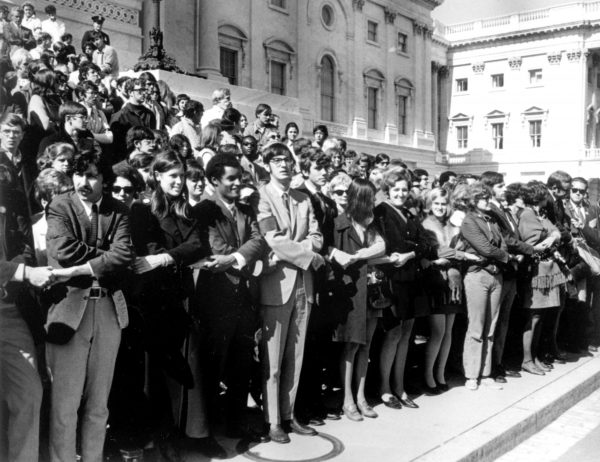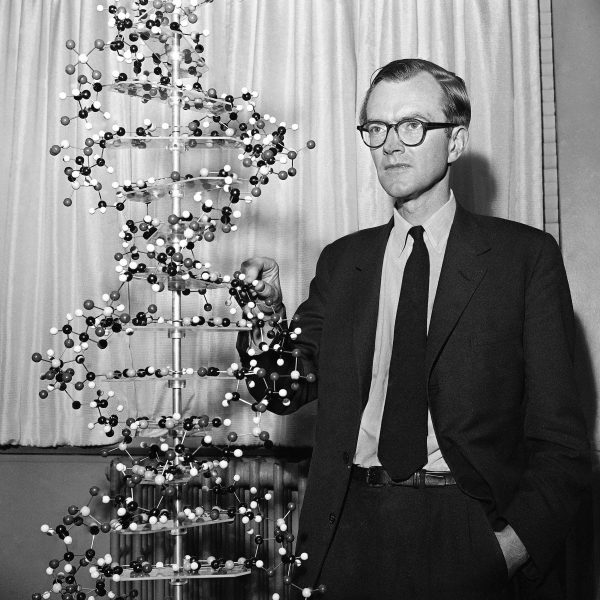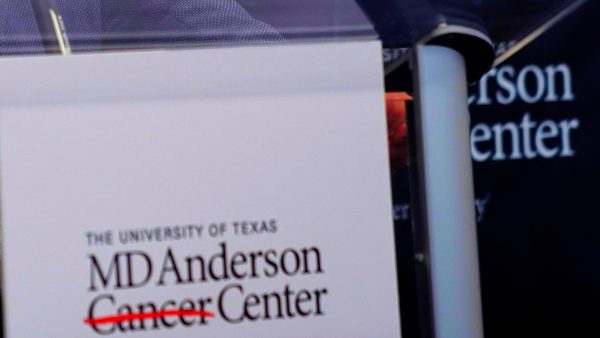This is new. On the moment of death we see the actual soul looking back. Talk about exceptional and repeatable proof.
Once again we are describing what is a physical impossibility similar to my observation of the INNER SUN when I was meditating.
The observers had zero doubt that they were looking at the soul. Better yet it was the whole spirit body making its existence obvious as it got ready to leave the 3D physical body behind.. Yet we expected this was plausible already and now we have a clear observation..
Atheist Oncologist Returns to Faith While Treating Cancer Patients: Science Proves the Existence of Higher Power
Dr. Stephen Iacoboni, oncologist, co-founder of St. Mary's Regional Cancer Center in Walla Walla Washington, and co-director of the Kennewick General Hospital Hematology-Oncology Program (Courtesy of Dr. Iacoboni)
0:0022:36
1
https://www.theepochtimes.com/atheist-oncologist-returns-to-faith-while-treating-cancer-patients-science-proves-the-existence-of-higher-power_4752464.html?
Dr. Stephen Iacoboni is part of the baby boomer generation. Born in 1952, he came of age during the 1960s when the country was flushed in the bubble of the ideal American Dream.
“I was raised as a Roman Catholic, and I was very faithful,” said Iacoboni, “but there are some inherent contradictions with Christianity, and when you’re young and idealistic, you don’t understand that humans are imperfect, and so you blame them for things that are just part of being a frail human with faults.”
Iacoboni’s disillusionment came in the early ’70s, when the societal problems festering in America’s inner cities rose to the surface with civil rights protests and anti-war movements against the Vietnam War.
Anti-war demonstrators, wearing black armbands, fill the steps of the United States Capitol Building and hold hands on the day of the National Moratorium in Washington DC, to protest against the continuing war in Vietnam, on Oct. 15, 1969. (AFP/Getty Images)
“I was raised to be patriotic and believed that everyone was equal; I became a young adult and [realized that] people of color don’t have the same rights and [we’re] slaughtering innocent people in Southeast Asia [in the Vietnam War],” Iacoboni told The Epoch Times during a phone call.
The United States withdrew from Vietnam once the casualties were too much for the country to bear.
In the aftermath of the lost war, Christians, who mostly held conservative views were blamed for the anti-communist policies that led to the United States’s eight-year intervention in the Vietnam War that led to mounting casualties, traumatized veterans, and stories of brutal killings Vietnam civilians by the U.S. military.
While Christians faced attack in the public forum for pushing the war agenda, modern science was spouting exciting new discoveries, framed in narratives that denied the existence of a higher being.
“Science of the ’60s and ’70s had come out and said, ‘well, we have solved the riddle of life: the riddle of life is divisible to biochemistry, that everything that you do, every thought that you have, every emotion that you have, is based on the DNA and you’re just a chemical machine.’”
From the late ’50s to ’70s, discoveries in DNA molecular biology exploded.
In 1953, James Watson and Francis Crick found that the DNA’s structure was a double helical structure. Jérôme Lejeune demonstrated in 1959 that diseases are genetic with a study showing that Down syndrome is attributed to being born with an extra chromosome 21 in every cell.
By 1965, the first transfer RNA (tRNA) was sequenced and it was discovered that RNA sequences in sets of three corresponded to specific amino acid that link together to form proteins.
“I was a chemist at the time and … I was young and well educated and stupid, meaning I wasn’t wise. I wasn’t able to see the fallacy in that argument, and the argument went all the way to saying that there is no reason to believe in the God of Abraham.”
Dr. Maurice Hugh Frederick Wilkins, 46, of Greenwich, England, stands with a model of a DNA molecule during a news conference in the New York office of the Sloan-Kettering Institute for Cancer Research on Oct. 18, 1962. (AP Photo/Anthony Camerano)
Iacoboni was given a book in medical school that shaped his younger years and influenced many medical students of that time. The book was “Chance and Necessity,” written by biochemist Jacques Monod, a Nobel laureate and an atheist.
Monod shared the award with François Jacob and André Lwoff in 1968. The three of them proved that information carried in the DNA is translated into proteins by means of a messenger, which we now know as messenger RNA (mRNA).
They also showed, using lac operon (required for the transport and metabolism of lactose) from Escherichia coli, that whether the actions of enzymes (proteins which speed up chemical reactions) were activated or suppressed was self-regulated by the DNA.
Monod used this finding to solidify his argument that biomolecular actions are controlled solely by our DNA and, therefore, there was no higher entity.
Despite the debunking of his argument over 30 years later by another atheist scientist with the discovery of epigenetics, Monod’s argument against the existence of God persisted, and the legacy of despair he left for man remained.
“The ancient covenant is in pieces,” Monod wrote, “man knows at last that he is alone in the universe’s unfeeling immensity, out of which he emerged only by chance. His destiny is nowhere spelled out, nor is his duty. The kingdom above or the darkness below; it is for him to choose.”
As an impressionable young adult at the time, Iacoboni took Monod’s arguments as fact. Disillusioned about the world, the anti-religion narrative from both politics and science made sense to him.
“Because ‘Christians are hypocrites,” said Iacoboni, “their religion is based on a fairy tale about something that happened a long time ago, and now we have proof in science that there is no God.’”
For Iacoboni at the time, it was easy and probably more comfortable letting go of God than believing in something the respected seniors in sciences were wholeheartedly denying.
“When you’re 20 years old, it’s not that hard to let go of God because believing in God requires certain constraints.”
“[The ’70s was] the time of free love. There was birth control … Everyone was looking for change.”
However, Iacoboni would soon find that his departure from faith in his early 20s would end up requiring a long and emotional road back to where it all began. Coming Back to Faith by Treating Cancer Patients
“In the first decade of the 21st Century, somewhere around 2000 to 2010, I very slowly came around [and returned to faith].”
Iacoboni’s book “The Undying Soul,” published in 2010, told of his emotional journey back to faith as he treated cancer patients, documenting his very first patients while he was still a fellow, to when he became a practicing specializing oncologist.
Iacoboni practiced his fellowship in MD Anderson, which remains to this day, a world-renowned university-based teaching hospital, and one of the premier cancer research facilities in the world.
“I belonged at Anderson—philosophically, I mean. As a young, atheist intellectual, fresh out of med school and full of hubris, I chose oncology because I wanted to prove that science and logic could triumph over anything—even cancer,” Iacoboni wrote in his book.
MD Anderson Cancer Center at the University of Texas, on Oct. 1, 2018. (Timothy A. Clary/AFP/Getty Images)
However, he would soon realize, starting with the very first patient he treated at Anderson, that more often than not, modern science could not stop the cancer from leaching away his patients’ lives.
Even worse, Iacoboni soon realized that while treating patients was the hard part, what he was confronted with and ill-prepared for was that his patients wanted an emotional healer and guide; they wanted him to help them face their deaths.
“Being an atheist, of course, I had no answers.”
“[As the] atheist doctor dealing with patients who are largely agnostic, the dying is very hard on everybody,” Iacoboni said, “my patients who would not allow themselves to have faith were very, very tormented on their deathbed.”
This reality agonized Iacoboni. He knew something was missing and in the middle of his career began searching for answers to help his patients on the emotional journey.
Things started changing for him once he started practicing in a small rural town, a place where almost all of his patients belonged to a faith.
The first patient who led him on his journey back to faith was a man from Ukraine named Pavel. Pavel was a simple farmer. He tended the livestock and crops near the Chernobyl nuclear reactor in Ukraine. When the Chernobyl disaster happened in 1986, the radiation turned his tomatoes yellow, green beans red, and his wheat shriveled up.
Yet Pavel’s wife and the other women ground the grains into flour for bread and they ate the strangely colored vegetables. Pavel and his family had no choice. They either ate what they planted, or they starved.
It was therefore not surprising that Pavel developed radiation-induced leukemia from the contaminated food he ate.
Pavel’s local hospital in Ukraine was ill-equipped to treat his cancer, but he had Russian relatives in Washington. After telling his story at their church, the church passed it to the state and their congressman, who was Tom Foley—at the time the Speaker of the House. Foley secured compassionate dispensation and a passport for Pavel and he was then flown into Washington for treatment.
Iacoboni was Pavel’s doctor, and though his family could provide no money for his treatment, knowing all of the sacrifices made to bring the man to his office, Iacoboni was determined to do all that he could to help Pavel.
However, Pavel was already in the advanced stages and would soon be on borrowed time. His first blood test showed that he was severely anemic with his red blood cell volume at 10 percent with the normal range 38-45 percent.
Yet, upon meeting the man, Iacoboni was taken aback by how happy the man was with no obvious sign of illness.
At their meeting in the hospital room, Pavel jumped out of bed and shook Iacoboni’s hand so hard that he could feel the calluses on his palm.
As Iacoboni recalled in his book:
“And then, slowly and ceremoniously, he bowed his head.
“I found myself taken aback by such formal deference. I assured him by word—and then, discovering he spoke almost no English at all, by body language—that no bows were necessary.
“Pavel smiled slightly, offering me an expression that spoke as clearly and plainly as possible: this isn’t about what’s formal or necessary, it’s about appreciation…
“And, in a word, grace.”
Iacoboni put Pavel on blood transfusions for the anemia and then started chemotherapy. Pavel achieved remission, but only for 9 months as the drugs slowly lost effectiveness.
Soon the leukemia took over and spread all over his body. Pavel’s spleen grew from the normal size of a potato to a watermelon.
Pavel was dying.
However, throughout the 9 months Iacoboni treated Pavel, he was amazed to find that not only was Pavel not anxious about death, he was anticipating death with eagerness and wonder.
Pavel was a Christian, like the many people in the town. Iacoboni has treated many Christians who, in their death, found no comfort in their faith. Pavel’s faith, however, served him very well.
“Unable to speak to me in words, he communicated through the light in his eyes, his easy smile, and his contented attitude. He interacted with everyone this way, not just me.”
On his own spiritual journey and while looking for answers, Iacoboni was drawn to Pavel’s grace and strength. Iacoboni knew his optimism and smiles were not a façade. Cancer strips away all kinds of veneers, and he has seen all sorts of patients.
Even as the damage from leukemia became obvious, Pavel remained gracious and did not complain of the pain he was in. While many patients may put up a brave front and act stronger and healthier in the clinic to have Iacoboni support them in their denial of death, Pavel did not.
“His optimism never felt forced in any way. When his dying body sagged, and his energy began to ebb, he didn’t fight it. He just let it happen,” he wrote in his book.
Eventually, the final days came for Pavel and Iacoboni had to hospitalize him. Even on his deathbed, Iacoboni was amazed to find that Pavel was smiling, comforting his friends and relatives.
It was hard for Iacoboni to communicate with Pavel, given their language barrier, so he stayed with Pavel through the final three or four hours by the bedside trying to understand this small simple man so full of grace and strength.
“During that vigil I observed for the very first time in my career the rare and overwhelming beauty of a spiritually contented death,” he wrote.
Contrary to all the patients Iacoboni had treated during the past 15 years, Pavel chose to die naturally without sedatives.
This allowed Iacoboni to stay emotionally connected to Pavel to the end. Pavel kept his eyes open, and Iacoboni watched him intently.
Then in the final minutes, Pavel’s gaze changed, it looked “unwordly”—a look of serenity and selflessness Iacoboni had never seen before.
At first Iacoboni thought that Pavel was becoming comatose, but his pulse was going strong and breathing unlabored.
Then Pavel’s “unwordly” expression changed slightly, and just enough to startle Iacoboni with the conviction that he was being watched by another sentient entity.
“Someone other than Pavel the man—his ego or his persona. But who…or what…could it be?” Iacoboni asked in his book.
The truth seemed to be leaping out at him, yet it was difficult for him to accept it.
Iacobini stared and held his breath. He did not know how long it took him before he relaxed and finally admitted. He wrote:
“Yes my friend, I see…’it’…”
“…I see your soul.”
“In that moment of epiphany, of recognition and actualization…Pavel let go. His eyes closed, his breathing stopped and the room fell still.”
That night, Iacoboni learnt with conviction an answer to the question that was haunting him after each death of his patients.
“Never again would I wonder if there was something more.”“The Undying Soul” by Stephen Iacononi. (Courtesy of Dr. Iacoboni)
Pavel was the first, important piece in Iacoboni’s journey back to faith.
“Now when I tell patients that they’re going to die I no longer think I’m sending them to hell. I’m just explaining to them the natural process of the world we live in, and we need to flow with it and face death itself,” said Iacoboni.
Telos: How Science Proves the Existence of a Designer
In 2010 Iacoboni began working his book “TELOS: The Scientific Basis for a Life of Purpose.” The book was finally published in 2022.
He expected if he had spent all his time writing the book, “Telos” would have taken him 6 months, but as a practicing oncologist, it took him 10 years.
While Iacoboni returned to faith emotionally—as documented in “The Undying Soul”—he was also researching intellectually, trying to understand why what he was taught was in complete opposition to what he was experiencing.
He soon found that the science he had a firm belief in was flawed and missing key evidence for its theories, even though the theories are touted as fact.
Throughout the book, he follows the theories of life from various great philosophers and scientists including Aristotle, Isaac Newton, Charles Darwin, and many more until the readers come to an understanding of the present day.
Pioneers of modern science, including Monod and Bertrand Russell, all argued that life was accidental and that humans were alone in the world with no higher entity.
“Man is the product of causes which had no prevision of the end they were achieving; his origin, his hopes, his loves and his beliefs, are but the outcome of accidental co-location of atoms,” wrote Russell.
Though these arguments made believers of their doctrine feel liberated, it also led them to the “unyielding despair” Russell faced, just as many of Iacoboni’s early patients experienced.
For, if their bodies and lives were accidental happenings, it eliminated their sense of purpose, the point of living.
“The infamous atheist Bertrand Russell said in a similar tone at a young age, ‘I considered suicide, which I would have done, but for the fact that I found mathematics to be so very interesting,'” Iacoboni wrote.
Contrary to what he was taught, Iacoboni observed nature and noticed life to be brimming with purpose and intention.
It was full of telos, meaning end or an ultimate purpose.“Telos: The Scientific Basis for a Life of Purpose.” (Courtesy of Dr. Iacoboni)
“The best example of this [purpose-driven life] in the world is the emperor penguins. They walk 60 miles on ice to get food and they fill up their stomachs and they walk 60 miles back and regurgitate the food for the chick,” said Iacoboni.
“Why do they do that? Why doesn’t this penguin say I’m not walking 60 miles to feed some stupid chick. I’m just gonna fill myself up and then I’m gonna relax, they don’t do that.”
Not only do emperor penguins endure this physical labor to breed their young, Iacoboni’s book also showed that they have an innate understanding of thermodynamics in incubation:
“Emperor penguins, which huddle together in an Antarctic blizzard, each one rotating in their turn from the center to the other rim of the circle and back again, sharing the cold and shielding each other in the most hostile environment on earth. Nobody trained the penguin to perform this complex maneuver or explained to them that by cooperating in this way, they would be better able to survive than if they just went it alone. The indwelling knowledge to act with such purpose was already inside them, inherent in their behavior.”
Their inherent drive to rear their young significantly surpasses their natural desire to survive. This understanding of their own physique, and how they should function came completely innate to them.Emperor penguins (Aptenodytes forsteri) in Antarctica. (National Science Foundation)
Iacoboni gave many examples of these innate drives in his book. He observed how newborn giraffes within 10 minutes of birth stand up on their feet and suckle from their mother, performing a task innate to themselves.
Where did this innate understanding come from?
Iacoboni argued that it was “designed” into the organism.
When we design something, we imbue it with a specific purpose and intention, and seeing that life is filled with a natural drive that surpasses survival alone, Iacoboni argued that there must be a higher designer, regardless of whether we can see this individual or not.
“If you walk down the beach … and you find a sandcastle and nobody is around. You would have to ask yourself the question, what is this thing doing here? Did the sand, the wind, and the water make this thing? Self organized with blind forces? Or did someone with a designing intellect put it together?” asked Iacoboni.
“Those are the only two possibilities right? And I don’t think there’s hardly anybody who’s not impaired, who would say ‘the sand and the wind built a sandcastle.’ They would say ‘no, some dad and his kids built a sandcastle, they played and they went home.’”
That is the same mindset Iacoboni established in the way he looks at life. Though we may not see the dad and the children building the sandcastle, we see the intellect and design in the temporary sandy construction, and in living beings, Iacoboni can see the design and intelligence too.
Sharks have a structure called the Ampullae of Lorizini that no other animals have. It is a unique network of mucus-filled pores across its front and sides that allow the shark to catch prey. Most sharks have a very poor sense of sight, and they cannot swim that fast either, so what it wants is to be able to catch a prey in distress. That’s what its ampullae does; it can detect turbulence at a distance.
One may, like Charles Darwin, argue that it arose out of evolution, meaning that sharks once did not have ampullae but then gained it through mutation (random change in the DNA).
That may sound great in theory, but reality often tells a different story.
“The problem is if you have random mutations you don’t go anywhere constructively. Everything is destructive,” said Iacoboni, “In medical fields, we know what mutations do, they kill you.”
In humans, mutations are the basis of genetically inherited diseases and cancer. Apart from creating drug-resistant bacteria and viruses, most mutations for animals and plants lead to disease.
Further, sharks have 16,000 billion pairs of DNA, so it is also a question of chance to not only have the mutations useful, but also that there must be combinations of mutations in the appropriate area, given that the other mutations elsewhere do not kill the shark first.
Even in the hypothetical scenario that the ampullae did come from mutations, it raises the question of survival for the shark without an ampullae, with poor eyesight and an average ability to swim. How would it have survived over many generations to gain the ampullae?
If the shark had good eyesight and could catch prey without the ampullae, then the sharks that are living now should be both keen in sight and with ampullae, having the sharks gradually lose their eyesight contradicts the theory of survival of the fittest where the one with the most beneficial traits survive and pass on their traits.
Therefore, Iacoboni argued that the other plausible reason is that it was all designed, with all the functions and purpose naturally fused into the final model of life.
“Organisms are about organization,” Iacoboni wrote, even the very etymology of the word organism is rooted in order, and design.Like a whirl of shiny flakes sparkling in a snow globe, the NASA/ESA Hubble Space Telescope catches an instantaneous glimpse of many hundreds of thousands of stars moving about in the globular cluster M13, one of the brightest and best-known globular clusters in the northern sky. This glittering metropolis of stars is easily found in the winter sky in the constellation Hercules and can even be glimpsed with the unaided eye under dark skies. M13 is home to over 100 000 stars and located at a distance of 25 000 light-years. (NASA)
A ‘Call to Arms’
TELOS is a “call to arms,” said Iacoboni. It is not simply an exercise, nor a read, but rather the recognition that a higher creator exists. Faithless individuals are doomed to the same misery and chaos experienced by Monod, Russell, and other atheist scientists cited in his book.
“I’m not interested in naming God, I’m not a theologian,” Iacoboni said.
“I only want you to believe in a supreme designer and understand that there’s a greater purpose that permeates life and that you need to get in touch with if you want to have a life worth living.”

